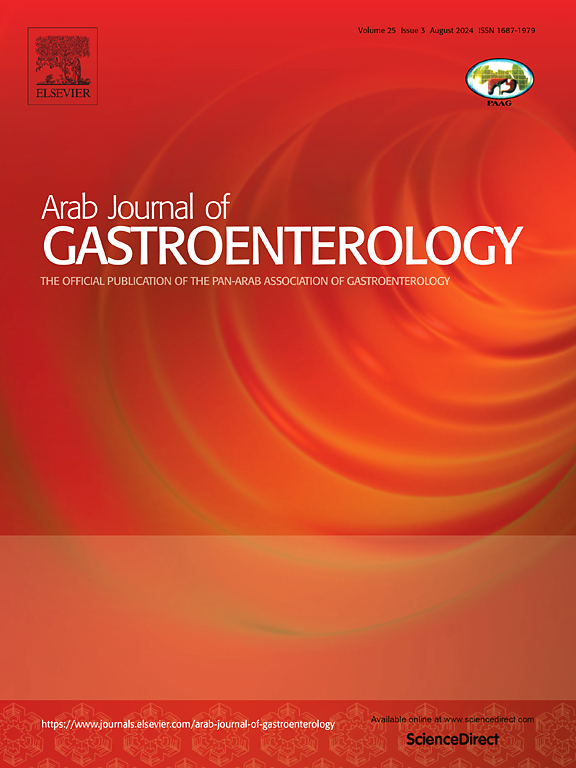Cinnamaldehyde attenuates CCL4-induced liver fibrosis by inhibiting the CYP2A6/Notch3 pathway
IF 1.1
4区 医学
Q4 GASTROENTEROLOGY & HEPATOLOGY
引用次数: 0
Abstract
Background
Hepatic stellate cells (HSCs) activation and hepatocyte injury contribute to liver fibrosis progression and subsequent cirrhosis. Literature showed that cinnamaldehyde (CA) could alleviate fibrosis procession and steatosis. However, its specific role in liver fibrosis remains largely unexplored.
Materials and methods
Liver fibrosis was induced in vivo, and CA was administered for 4 weeks. Liver inflammation, fibrosis, apoptosis, and proliferation were evaluated using histological, western blotting, and immunohistochemistry. CYP2A6 and Notch3 expression levels were also measured. In vitro, TGF-β stimulated LX2 cell activation was used, and siCYP2A6 was employed to evaluate the anti-fibrosis mechanism of CA.
Results
CA effectively improved liver function and reduced fibrosis in CCL4-treated rats, significantly decreasing serum ALT, AST, GGT, TBIL, and HAase levels (all p < 0.05), with a notable increase in ALB in the high-dose group. Histologically, CA reduced hepatic disorganization and collagen proliferation, significantly diminishing fibrotic areas in the CA-H group (p < 0.05). CA also downregulated α-SMA and collagen I expression, and suppressed TGF-β activity. In TGF-β1-stimulated LX2 cells, CA treatment led to significant reductions in CYP2A6 and Notch3 expression (p < 0.05), highlighting its regulatory effects on key fibrotic pathways.
Conclusions
CA alleviated CCL4-induced liver fibrosis with inhibition of HSCs activation and liver inflammation and reduced hepatocyte apoptosis, potentially linked to the HSCs-mediated CYP2A6/Notch3 modulation.
肉桂醛通过抑制CYP2A6/Notch3通路减轻ccl4诱导的肝纤维化。
背景:肝星状细胞(HSCs)活化和肝细胞损伤有助于肝纤维化进展和随后的肝硬化。文献表明,肉桂醛(CA)可减轻纤维化过程和脂肪变性。然而,其在肝纤维化中的具体作用在很大程度上仍未被探索。材料与方法:体外诱导肝纤维化,给予CA治疗4周。采用组织学、免疫印迹和免疫组织化学方法评估肝脏炎症、纤维化、凋亡和增殖。同时检测CYP2A6和Notch3的表达水平。体外采用TGF-β刺激LX2细胞活化,并用siCYP2A6评价CA抗纤维化机制。结果:CA能有效改善ccl4治疗大鼠肝功能,减轻纤维化,显著降低血清ALT、AST、GGT、TBIL、HAase水平(均p)。CA通过抑制hsc激活和肝脏炎症以及减少肝细胞凋亡来减轻ccl4诱导的肝纤维化,这可能与hsc介导的CYP2A6/Notch3调节有关。
本文章由计算机程序翻译,如有差异,请以英文原文为准。
求助全文
约1分钟内获得全文
求助全文
来源期刊

Arab Journal of Gastroenterology
Medicine-Gastroenterology
CiteScore
2.70
自引率
0.00%
发文量
52
期刊介绍:
Arab Journal of Gastroenterology (AJG) publishes different studies related to the digestive system. It aims to be the foremost scientific peer reviewed journal encompassing diverse studies related to the digestive system and its disorders, and serving the Pan-Arab and wider community working on gastrointestinal disorders.
 求助内容:
求助内容: 应助结果提醒方式:
应助结果提醒方式:


